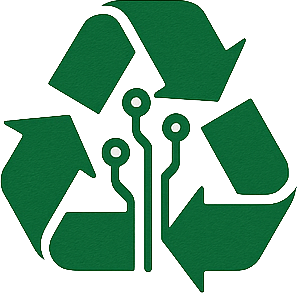In an era dominated by technology, electronic waste, or e-waste, has become a pressing environmental challenge across the United States. With millions of devices discarded annually, the need for accessible and responsible e-waste disposal options is more urgent than ever. This article explores the latest developments in e-waste management, highlights local disposal solutions, and examines the broader implications for communities and the environment. From new regulations to innovative recycling programs, we uncover how Americans can find “e-waste disposal near me” and contribute to a sustainable future.
The Rising Tide of E-Waste in the United States
The U.S. generates over 6.9 million metric tons of e-waste each year, according to a 2022 report by the Environmental Protection Agency (EPA). This includes discarded smartphones, laptops, televisions, and other electronics that often contain hazardous materials like lead and mercury. Improper disposal can lead to soil and water contamination, posing risks to public health and ecosystems.
Only about 15-20% of this waste is recycled properly, with much of it ending up in landfills or being shipped overseas. The growing volume of obsolete devices underscores the importance of finding reliable e-waste disposal options close to home.
How to Locate E-Waste Disposal Near Me
For many Americans, the question of “e-waste disposal near me” is a practical one. Fortunately, several resources and programs are available to help. Local governments, private companies, and nonprofit organizations have stepped up to provide accessible solutions.
- Municipal Collection Programs: Many cities and counties offer drop-off locations or scheduled collection events for e-waste. Check your local government website for details.
- Retailer Take-Back Programs: Major retailers like Best Buy and Staples often accept old electronics for recycling at no cost.
- Certified Recyclers: Organizations certified by programs like e-Stewards or R2 ensure responsible handling of e-waste. Websites like Earth911.com can help locate nearby facilities.
- Manufacturer Initiatives: Some brands, such as Apple and Dell, provide mail-back options or in-store recycling for their products.
These options make it easier than ever to dispose of electronics responsibly, reducing environmental harm and supporting resource recovery.
New Regulations and Policies Shaping E-Waste Management
Recent legislative efforts in the U.S. aim to address the e-waste crisis head-on. As of 2023, 25 states have enacted laws requiring manufacturers to fund recycling programs, though coverage varies widely. California, for instance, has one of the most comprehensive systems, mandating free recycling for most electronic devices.
According to Dr. Sarah Bennett, an environmental policy expert at Stanford University, “State-level policies are a step forward, but a national framework is needed to standardize e-waste management and ensure no community is left behind.” Without uniform regulations, disparities in access to disposal services persist, particularly in rural areas.
The Impact on Communities and Businesses
Improper e-waste disposal disproportionately affects low-income communities, where illegal dumping is more common due to limited access to recycling facilities. Health risks from exposure to toxic substances are a growing concern, prompting advocacy groups to push for equitable solutions.
For businesses, managing e-waste presents both challenges and opportunities. Companies that adopt sustainable practices can enhance their reputation and comply with emerging regulations. Meanwhile, the recycling industry is booming, with firms recovering valuable materials like gold and copper from discarded devices, creating jobs and reducing reliance on raw resources.
Future Outlook: Innovations in E-Waste Recycling
Looking ahead, technological advancements offer hope for more efficient e-waste management. Innovations like robotic sorting systems and chemical recycling processes are improving recovery rates of precious metals. Additionally, initiatives to design products with recyclability in mind—known as “circular economy” principles—are gaining traction among manufacturers.
However, challenges remain. Public awareness about proper disposal methods is still low, and funding for large-scale recycling infrastructure is limited. Experts suggest that education campaigns and federal investment could bridge these gaps, ensuring that finding “e-waste disposal near me” becomes second nature for all Americans.
Conclusion
The issue of e-waste disposal in the United States is complex but solvable. With millions of tons of electronic waste generated annually, accessible solutions like local drop-off points, retailer programs, and certified recyclers are vital for protecting the environment and public health. As policies evolve and innovations emerge, individuals and businesses alike have a role to play in tackling this crisis. By taking advantage of resources to find “e-waste disposal near me,” every American can contribute to a cleaner, more sustainable future.
Frequently Asked Questions (FAQ)
1. What qualifies as e-waste?
E-waste includes discarded electronic devices such as smartphones, computers, televisions, printers, and batteries that are no longer in use.
2. Why is proper e-waste disposal important?
Improper disposal can release toxic substances into the environment, harming ecosystems and human health. Responsible recycling recovers valuable materials and reduces landfill waste.
3. How can I find e-waste disposal near me?
Use online tools like Earth911.com, check with local government websites for collection events, or visit retailer take-back programs at stores like Best Buy.
4. Are there costs associated with e-waste recycling?
Many programs offer free recycling, though some specialized items may incur fees depending on location and service provider.
5. What happens to recycled electronics?
Recycled electronics are dismantled, sorted, and processed to recover materials like metals and plastics, which are then reused in manufacturing new products.





